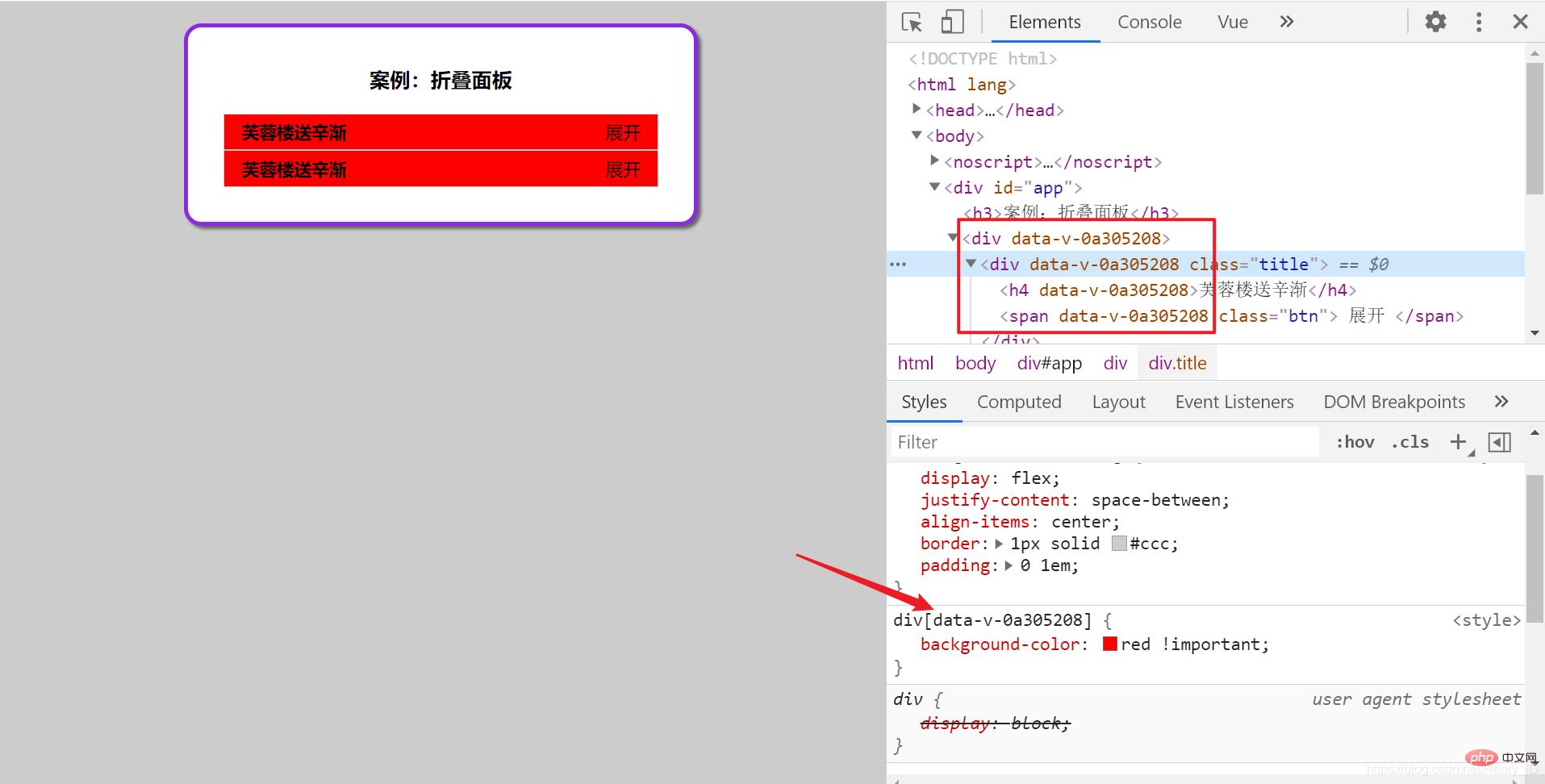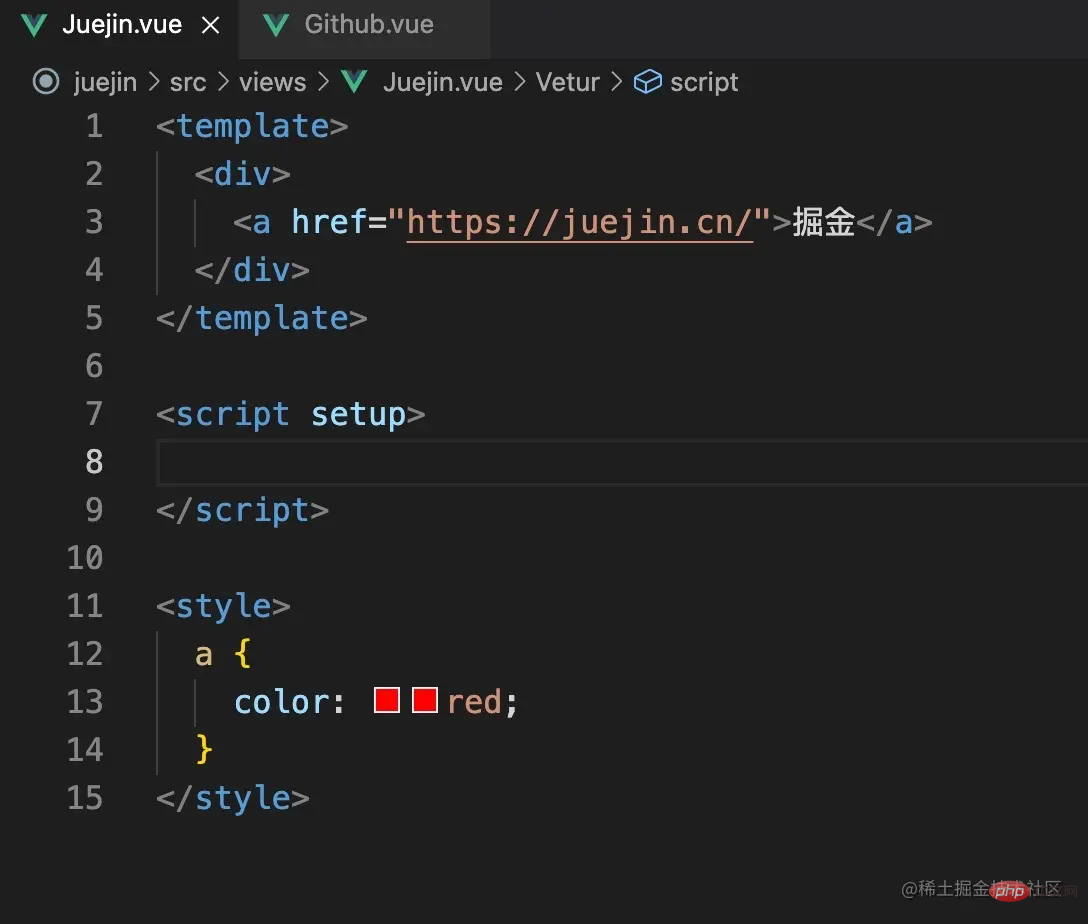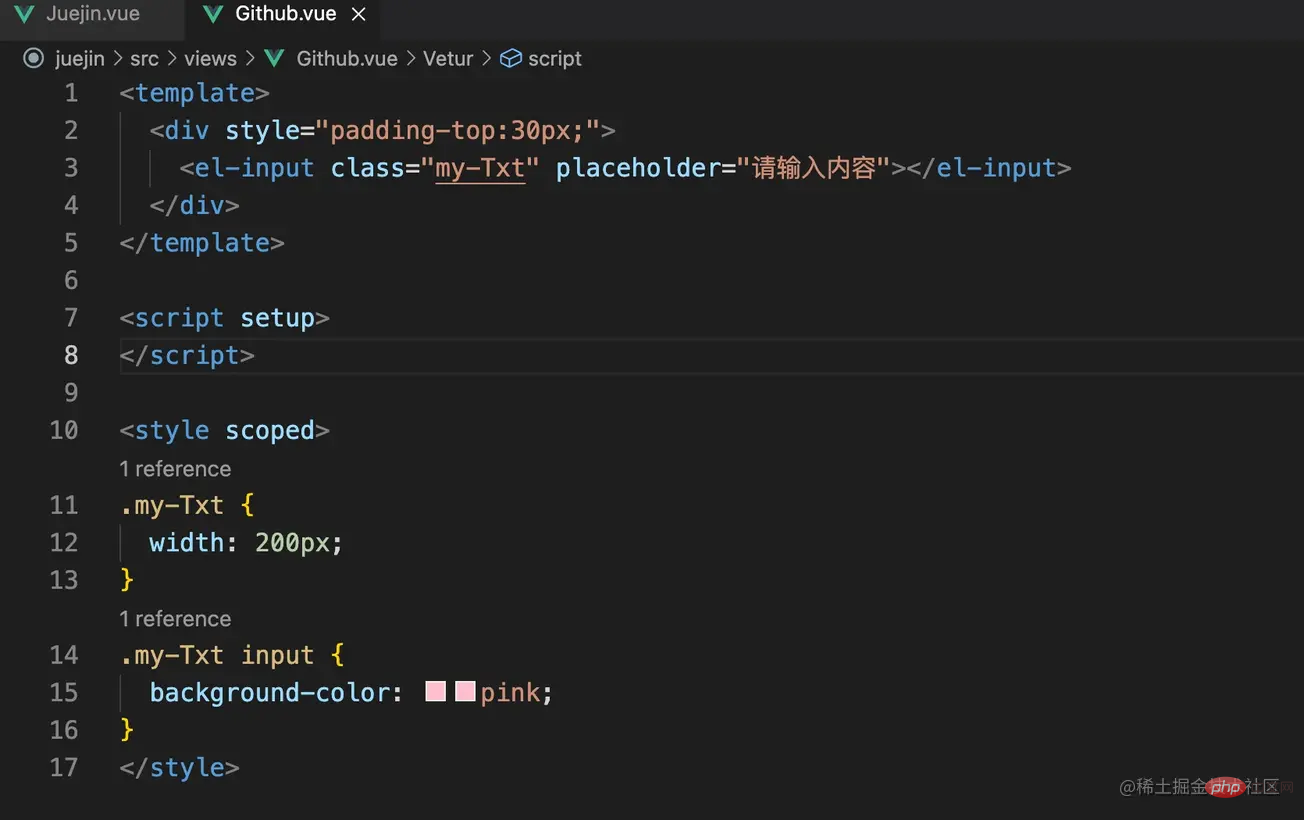
This article brings you relevant knowledge about vue, which mainly introduces issues related to the scoped attribute. If you add the scoped attribute to the style, you will add it to the label of this component. Let’s take a look at the attributes starting with the last randomly generated data-v. I hope it will be helpful to everyone.

[Related recommendations: javascript video tutorial, vue.js tutorial】
Purpose: Solve the conflict problem of multiple components with the same style name
Requirements: p tag name selector, set background color
Problem: It is found that both the p in the component and the p outside are effective
Solution: Add the scoped attribute to the style tag in the Panel.vue component
<style></style>
// style 添加 scoped 属性后,可以实现样式独立作用域<style>p{
background-color: pink;}</style>Add the scoped attribute to the style, and it will Add a randomly generated attribute starting with data-v to the label of this component
and it must be an element of the current component to have this custom attribute and be affected by this style

Summary: Add scoped to style, and the style in the component only takes effect in the current vue component
Here is a demo made with vue. There are two pages. One page is the a tag of the Nuggets, and the other page is the a tag of vue. Let’s take a look at the role of scoped and give the a tag to one of the pages. Add red, and the other one does not add any style, and does not use scoped in the style, as shown below

Everyone should know the answer, yes! The link text in both pages turns red. When we click on the juejin page, the browser will automatically introduce the style of the current page. When we click on github again, the browser will reuse this style, so the color of the link a will all turn red, because Vue is a single-page application, so the styles of every page we open will be sandwiched into global styles. The solution is to add scoped. At this time, the color of the a tag will be different. Let’s open the page to see Next a tag (picture below)

At this time, the a tag has an extra data-v-xxxxxxx, which Vue adds for us As above, when Vue builds this project, it will remind us to use component units. All elements under different components will be added with the same component ID, and at the same time, attribute selectors will be used in the styles we write. After splicing this unique identifier, let’s verify it, (picture below)

Yes, after we add scoped, Vue will be in this style Add this attribute to the last paragraph, and then select the element through the attribute selector to isolate the element style. Next, let’s take a look at the side effects of scoped
At this time We introduce element-ui to verify the side effects of scoped. Here is a demo (picture below). Scoped is also used here

Note that there is no input element here. For example, data-v- The unique identifier of xxxxxx is
. But what does the style we wrote ourselves (my-Txt input) look like after it is constructed? (Picture below)

#As shown in the picture above, the style we wrote ourselves has been spliced with this unique identifier, so no matter how we operate, we cannot hit this element. , that is to say, Vue did not add this logo to this input, but added this logo to our style. However, if we remove scoped, we can hit the target, but we do not recommend this. Style Will be packaged into a unified style. This is a side effect of scoped. So how do we solve it? Style penetration
<style>
.my-Txt {
width: 200px;
}
.my-Txt ::v-deep input {
background-color: pink;
}
</style>
##
We can see that this unique identifier runs from the back of the input to the back of my-Txt, which means that if we don’t add this::v-deep, Vue will always splice this unique identifier into the style we wrote. In the last paragraph, if we want to change the position of this unique identifier, we need to specify it with style penetration. Then the above picture means that the my-Txt element with this unique identifier will be applied to the input in its child elements. This style, and the my-Txt we wrote also has this unique identifier, as you can see from the picture above.
【Related recommendations: javascript video tutorial, vue.js tutorial】
The above is the detailed content of Simple analysis of the role of vue component scoped. For more information, please follow other related articles on the PHP Chinese website!